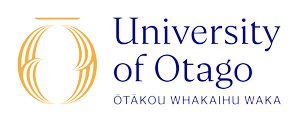Telehealth in remote Australia: a supplementary tool or an alternative model of care replacing face-to-face consultations?
The COVID-19 pandemic increased the use of telehealth consultations by telephone and video around the world. While telehealth can improve access to primary health care, there are significant gaps in our understanding about how, when and to what extent telehealth should be used. This paper explores the perspectives of health care staff on the key elements relating to the effective use of telehealth for patients living in remote Australia.
2023-05-05Mathew, S., Fitts, M.S., Liddle, Z. et al. Telehealth in remote Australia: a supplementary tool or an alternative model of care replacing face-to-face consultations?. BMC Health Serv Res 23, 341 (2023).
OPEN ACCESS: https://doi.org/10.1186/s12913-023-09265-2
Interesting paper in the context of COVID19 on telehealth in rural and remote areas in Australia. There are opportunities in this space with the COVID19 experience normalising telehealth, yet we need to bear in mind it is not an approach that save’s time or one that suits every one. It would be interesting to hear the perspective of patients.
Abstract
Background
The COVID-19 pandemic increased the use of telehealth consultations by telephone and video around the world. While telehealth can improve access to primary health care, there are significant gaps in our understanding about how, when and to what extent telehealth should be used. This paper explores the perspectives of health care staff on the key elements relating to the effective use of telehealth for patients living in remote Australia.
Methods
Between February 2020 and October 2021, interviews and discussion groups were conducted with 248 clinic staff from 20 different remote communities across northern Australia. Interview coding followed an inductive approach. Thematic analysis was used to group codes into common themes.
Results
Reduced need to travel for telehealth consultations was perceived to benefit both health providers and patients. Telehealth functioned best when there was a pre-established relationship between the patient and the health care provider and with patients who had good knowledge of their personal health, spoke English, and had access to and familiarity with digital technology. On the other hand, telehealth was thought to be resource intensive, increasing remote clinic staff workload as most patients needed clinic staff to facilitate the telehealth session and complete background administrative work to support the consultation and an interpreter for translation services. Clinic staff universally emphasised that telehealth is a useful supplementary tool, and not a stand-alone service model replacing face-to-face interactions.
Conclusion
Telehealth has the potential to improve access to healthcare in remote areas if complemented with adequate face-to-face services. Careful workforce planning is required while introducing telehealth into clinics that already face high staff shortages. Digital infrastructure with reliable internet connections with sufficient speed and latency needs to be available at affordable prices in remote communities to make full use of telehealth consultations. Training and employment of local Aboriginal staff as digital navigators could ensure a culturally safe clinical environment for telehealth consultations and promote the effective use of telehealth services among community members.
